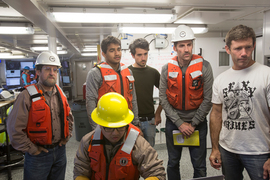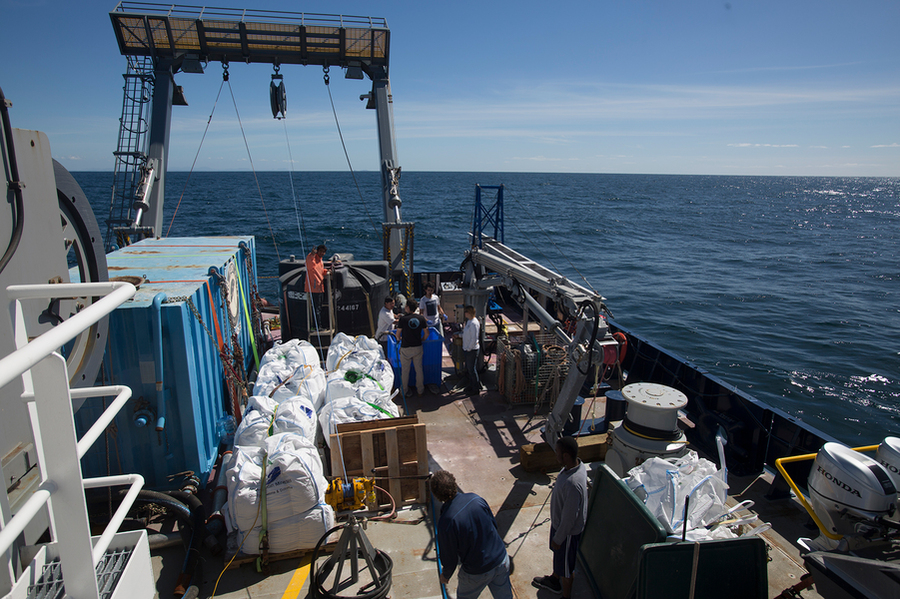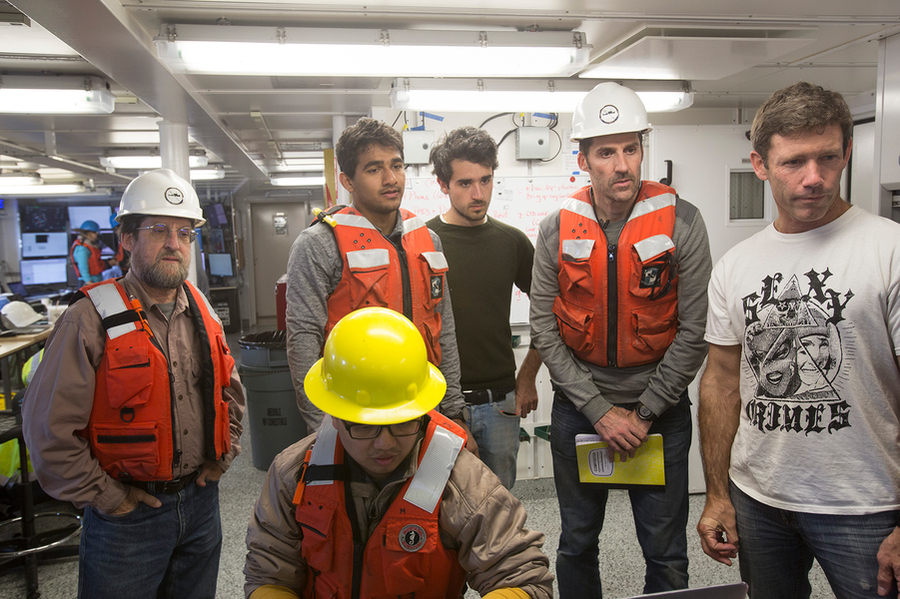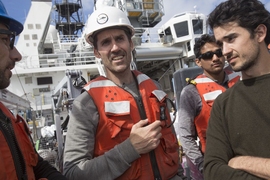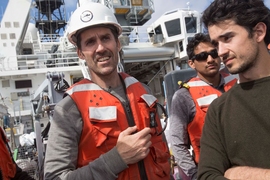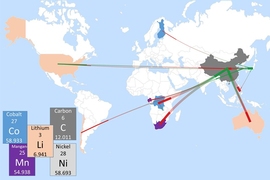In certain parts of the deep ocean, scattered across the seafloor, lie baseball-sized rocks layered with minerals accumulated over millions of years. A region of the central Pacific, called the Clarion Clipperton Fracture Zone (CCFZ), is estimated to contain vast reserves of these rocks, known as “polymetallic nodules,” that are rich in nickel and cobalt — minerals that are commonly mined on land for the production of lithium-ion batteries in electric vehicles, laptops, and mobile phones.
As demand for these batteries rises, efforts are moving forward to mine the ocean for these mineral-rich nodules. Such deep-sea-mining schemes propose sending down tractor-sized vehicles to vacuum up nodules and send them to the surface, where a ship would clean them and discharge any unwanted sediment back into the ocean. But the impacts of deep-sea mining — such as the effect of discharged sediment on marine ecosystems and how these impacts compare to traditional land-based mining — are currently unknown.
Now oceanographers at MIT, the Scripps Institution of Oceanography, and elsewhere have carried out an experiment at sea for the first time to study the turbulent sediment plume that mining vessels would potentially release back into the ocean. Based on their observations, they developed a model that makes realistic predictions of how a sediment plume generated by mining operations would be transported through the ocean.
The model predicts the size, concentration, and evolution of sediment plumes under various marine and mining conditions. These predictions, the researchers say, can now be used by biologists and environmental regulators to gauge whether and to what extent such plumes would impact surrounding sea life.
“There is a lot of speculation about [deep-sea-mining’s] environmental impact,” says Thomas Peacock, professor of mechanical engineering at MIT. “Our study is the first of its kind on these midwater plumes, and can be a major contributor to international discussion and the development of regulations over the next two years.”
The team’s study appears today in Nature Communications: Earth and Environment.
Peacock’s co-authors at MIT include lead author Carlos Muñoz-Royo, Raphael Ouillon, Chinmay Kulkarni, Patrick Haley, Chris Mirabito, Rohit Supekar, Andrew Rzeznik, Eric Adams, Cindy Wang, and Pierre Lermusiaux, along with collaborators at Scripps, the U.S. Geological Survey, and researchers in Belgium and South Korea.
Out to sea
Current deep-sea-mining proposals are expected to generate two types of sediment plumes in the ocean: “collector plumes” that vehicles generate on the seafloor as they drive around collecting nodules 4,500 meters below the surface; and possibly “midwater plumes” that are discharged through pipes that descend 1,000 meters or more into the ocean’s aphotic zone, where sunlight rarely penetrates.
In their new study, Peacock and his colleagues focused on the midwater plume and how the sediment would disperse once discharged from a pipe.
“The science of the plume dynamics for this scenario is well-founded, and our goal was to clearly establish the dynamic regime for such plumes to properly inform discussions,” says Peacock, who is the director of MIT’s Environmental Dynamics Laboratory.
To pin down these dynamics, the team went out to sea. In 2018, the researchers boarded the research vessel Sally Ride and set sail 50 kilometers off the coast of Southern California. They brought with them equipment designed to discharge sediment 60 meters below the ocean’s surface.
“Using foundational scientific principles from fluid dynamics, we designed the system so that it fully reproduced a commercial-scale plume, without having to go down to 1,000 meters or sail out several days to the middle of the CCFZ,” Peacock says.
Over one week the team ran a total of six plume experiments, using novel sensors systems such as a Phased Array Doppler Sonar (PADS) and epsilometer developed by Scripps scientists to monitor where the plumes traveled and how they evolved in shape and concentration. The collected data revealed that the sediment, when initially pumped out of a pipe, was a highly turbulent cloud of suspended particles that mixed rapidly with the surrounding ocean water.
“There was speculation this sediment would form large aggregates in the plume that would settle relatively quickly to the deep ocean,” Peacock says. “But we found the discharge is so turbulent that it breaks the sediment up into its finest constituent pieces, and thereafter it becomes dilute so quickly that the sediment then doesn’t have a chance to stick together.”
Dilution
The team had previously developed a model to predict the dynamics of a plume that would be discharged into the ocean. When they fed the experiment’s initial conditions into the model, it produced the same behavior that the team observed at sea, proving the model could accurately predict plume dynamics within the vicinity of the discharge.
The researchers used these results to provide the correct input for simulations of ocean dynamics to see how far currents would carry the initially released plume.
“In a commercial operation, the ship is always discharging new sediment. But at the same time the background turbulence of the ocean is always mixing things. So you reach a balance. There’s a natural dilution process that occurs in the ocean that sets the scale of these plumes,” Peacock says. “What is key to determining the extent of the plumes is the strength of the ocean turbulence, the amount of sediment that gets discharged, and the environmental threshold level at which there is impact.”
Based on their findings, the researchers have developed formulae to calculate the scale of a plume depending on a given environmental threshold. For instance, if regulators determine that a certain concentration of sediments could be detrimental to surrounding sea life, the formula can be used to calculate how far a plume above that concentration would extend, and what volume of ocean water would be impacted over the course of a 20-year nodule mining operation.
“At the heart of the environmental question surrounding deep-sea mining is the extent of sediment plumes,” Peacock says. “It’s a multiscale problem, from micron-scale sediments, to turbulent flows, to ocean currents over thousands of kilometers. It’s a big jigsaw puzzle, and we are uniquely equipped to work on that problem and provide answers founded in science and data.”
The team is now working on collector plumes, having recently returned from several weeks at sea to perform the first environmental monitoring of a nodule collector vehicle in the deep ocean in over 40 years.
This research was supported in part by the MIT Environmental Solutions Initiative, the UC Ship Time Program, the MIT Policy Lab, the 11th Hour Project of the Schmidt Family Foundation, the Benioff Ocean Initiative, and Fundación Bancaria “la Caixa.”

